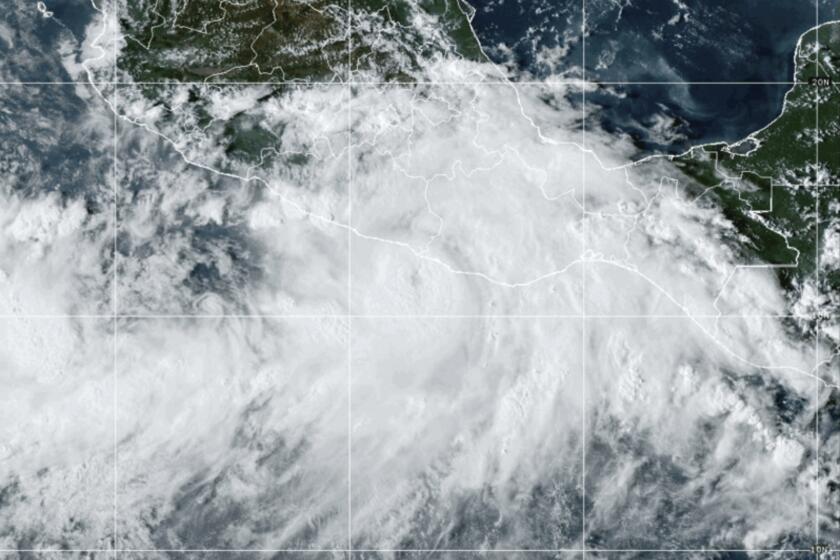NASA’s Mars rover Spirit endangered by dust storms
Massive Martian dust storms are threatening the survival of NASA’s Spirit rover, which has been exploring Mars for almost five years but is dangerously low on power.
Spirit last communicated with Earth on Sunday, when it reported that its solar arrays had produced just 89 watt-hours of energy, which is much less than the rover uses in a day.
It’s also the least amount of power that either Spirit, or its twin, Opportunity, has produced over the entire life of the mission on Mars, which began in January 2004.
John Callas, the rover project manager at the Jet Propulsion Laboratory in La Canada Flintridge, said the rover’s survival might be in jeopardy because the dust-covered arrays were producing only a third as much power as they were capable of, even before the latest dust storms hit. The storms of the last few days have reduced the output even more, to 26.5%, he said.
The announcement of Spirit’s problems came a day after NASA declared an end to the Phoenix mission near Mars’ north pole, the first to sample ice on an alien planet. Dust storms, and the approach of winter in the northern hemisphere, are blamed for Phoenix’s demise.
As for Spirit, Callas said he believed the low power levels probably tripped a built-in fault-protection system, which automatically disconnects nearly all the rover’s electronics from its batteries to keep them from draining completely.
When that happens, mission managers on Earth lose control of the vehicle.
Ideally, after a low-power shutdown, the rover will periodically check to see whether the batteries have recharged. If they have, it resumes normal operations.
“The best chance for survival for Spirit,” Callas said, is to avoid a low-power shutdown, from which it might not awake.
To avoid draining the batteries, mission managers sent a message to the rover Tuesday, ordering it not to communicate with Earth until Thursday.
By then, NASA officials hope, the dust storms will have cleared and the solar panels will be producing more power.
After spending much of the southern hemisphere winter parked, Spirit had only started driving again when the dust storms hit.
The rover is currently halted at a geological feature called Home Plate.
Meanwhile, Opportunity, which has not been compromised by the dust storms to the same extent, is driving to a deep crater.
The rovers have far outlasted their original life expectancy of 90 days.
During their time on Mars, they have drilled into rocks and taken pictures of erosion patterns that proved that large parts of the Red Planet were once covered by seas or lakes.
Today, the surface is much too cold for water to be in liquid form, scientists say.
Scientists are now using the rovers to understand how the planet changed from a more temperate world to a barren rock.
--
More to Read
Sign up for Essential California
The most important California stories and recommendations in your inbox every morning.
You may occasionally receive promotional content from the Los Angeles Times.










